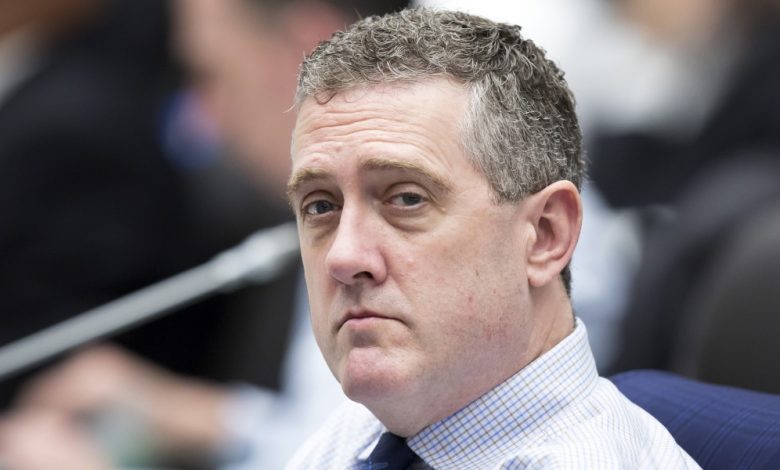Fed official Bullard says higher interest rates are needed to reduce inflation

Even Federal Reserve officials are divided on whether rate hikes will dampen inflation.
Earlier this month, the Fed raised interest rates by 0.75 percentage point, the sixth rate hike this year, which brought the federal funds rate to a range of 3.75% to 4%.
Some have criticized the Fed for rushing to hike rates too quickly, fearing the central bank could inadvertently steer the economy into recession. But so far the Fed appears to be making modest progress given two encouraging reports this month – one reflecting how fast prices are rising for consumers and another for producers.
But even if inflation shows signs of slowing, not all Fed officials believe the central bank’s job is done.
“So far, the change in monetary policy stance appears to have had a limited impact on observed inflation,” James Bullard, president of the Federal Reserve Bank of St. Louis, said at an event in Louisville on Thursday.
Bullard said the Fed’s strategy is to raise rates to “enough restrictive” levels to slow the economy and curb inflation, but the central bank has not yet achieved its goal.
“My approach to this question is based on ‘generous’ assumptions – assumptions that tend to favor more dovish policies over more restrictive ones,” he said. “Even under these generous assumptions, the policy rate is not yet in a range that could be considered sufficiently restrictive.”
A split Fed
With inflation showing signs of slowing, economists and even some Fed officials have become more hopeful.
On the release of last week’s encouraging CPI report, the University of Michigan report Justin WolferHarvard University economist Jason Furmanand Nobel laureates Paul Krugman Everyone wrote on Twitter that the US economy may already have peaked in inflation. Wolfers and Krugman both cited so-called lagging indicators as evidence – signs of slowing inflation that take longer to show up in the economy, such as falling rents.
Announcing the latest rate hike on Nov. 2, Fed officials said they would start “taking into account” factors other than headline inflation, which would signal smaller rate hikes in the future. Some officials, including Fed Vice Chairman Lael Brainard, Chicago Fed President Charles Evans, San Francisco President Mary Daly and Dallas President Lorie Logan, have all individually signaled that the central bank is planning an imminent could consider slowing rate hikes.
San Francisco’s Daly, for example, said stopping interest rate hikes would be “appropriate” when the federal funds rate was between 4.75% and 5.25%. But in his comments on Thursday, Bullard offered his view that the Fed likely needs to hike higher.
“Based on today’s analysis, I would say 5% to 5.25%. That’s the bare minimum,” he said.
Bullard reached this conclusion by relying on the Taylor rule, a formula for setting monetary policy developed 30 years ago by Stanford University economist John Taylor. It uses recent economic growth and inflation data – including lagging indicators – to calculate an ideal interest rate policy for any current economic environment. The Taylor rule focuses primarily on inflation data and not on economic growth and the deviation of inflation from the Fed’s target, which is traditionally an annual rate of 2%.
Although Bullard’s suggested interest rate of 5% to 5.25% was based on Taylor’s rule, he noted that this was only a “minimum recommended value” that could be even higher under “less generous assumptions” about economic conditions could.
“Although the policy rate has risen significantly this year, it has not yet reached a level that could be justified as being sufficiently restrictive,” he said. “In order to reach a sufficiently restrictive level, the key interest rate must be increased further.”
But critics have warned that if more central banks follow suit, the Fed risks triggering a US and global recession. Meanwhile, some economists like former Treasury Secretary Larry Summers are taking the opposite approach, saying that just a severe recession will be enough to tackle current US inflation levels
On Thursday, Bullard said he expects inflation to start falling from 2023, addressing concerns about slowing economic growth. “It’s possible that heightened financial stress could develop in such an environment,” he said, adding that despite rapid rate hikes, the Fed has seen few signs of extreme financial stress so far.
“The transparency with which this [policy rate] Rate hikes delivered along with forward guidance appears to have allowed for a relatively orderly transition to higher interest rate levels so far,” he said.
Our new weekly Impact Report newsletter will examine how ESG news and trends are shaping the roles and responsibilities of today’s leaders – and how best to address these challenges. Subscribe here.



